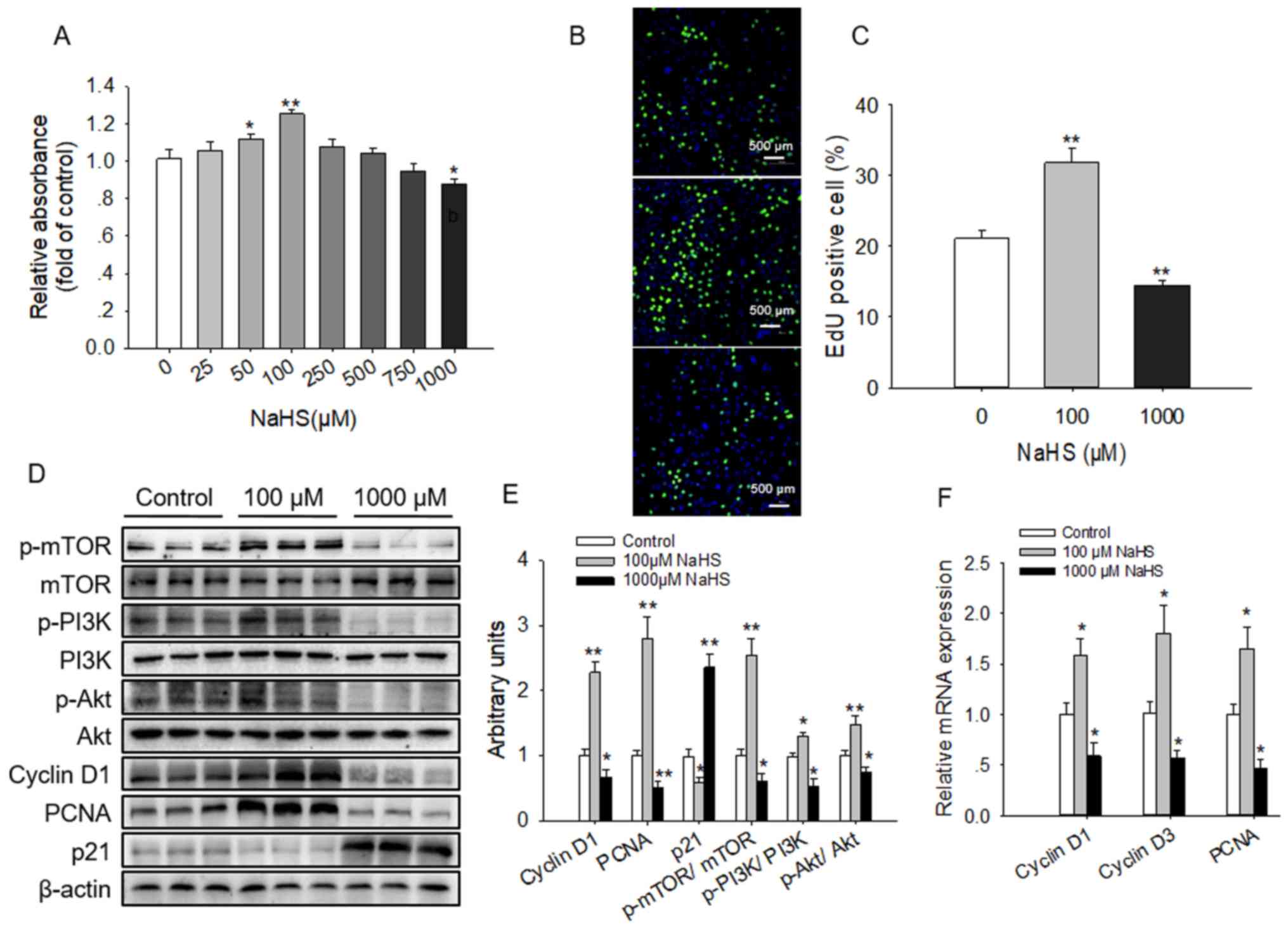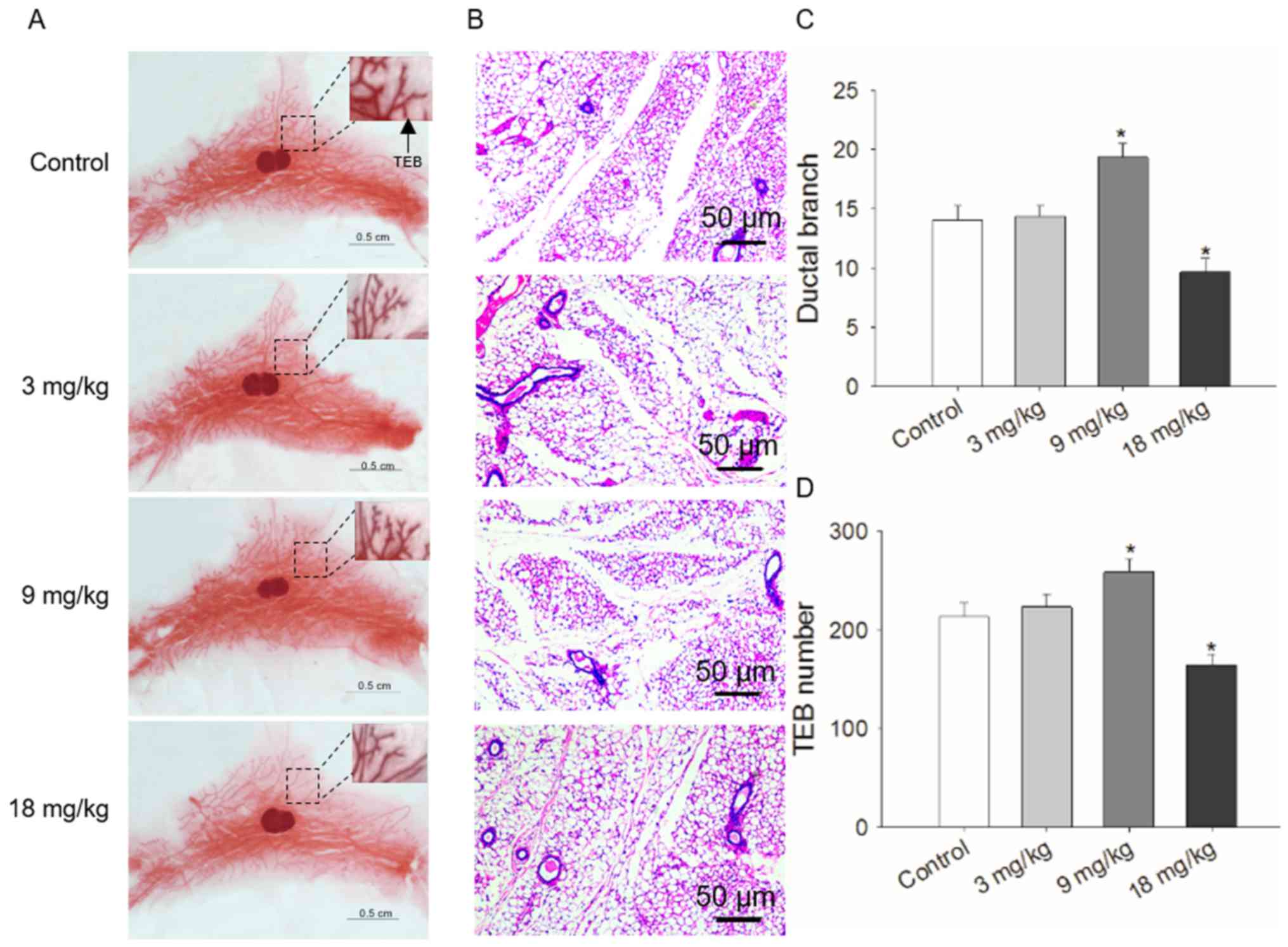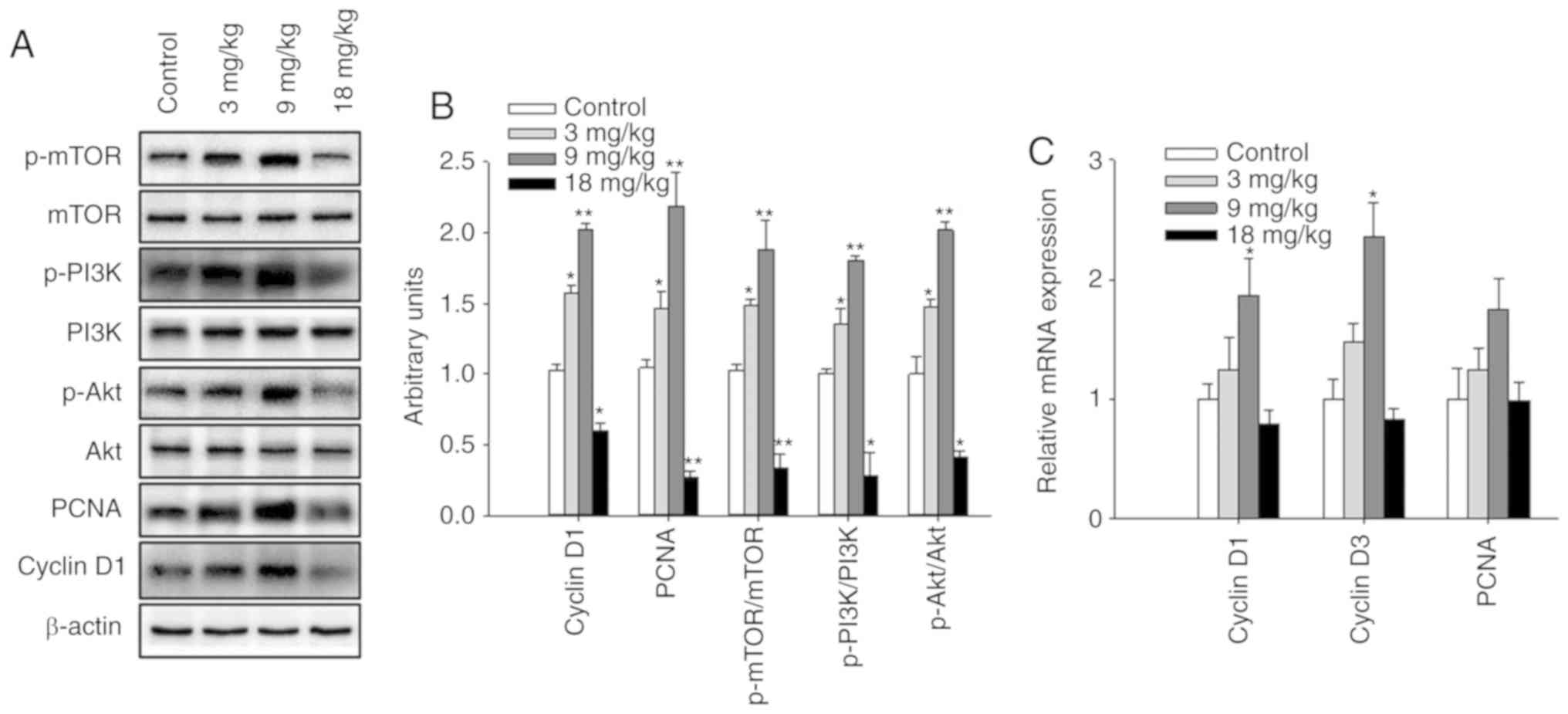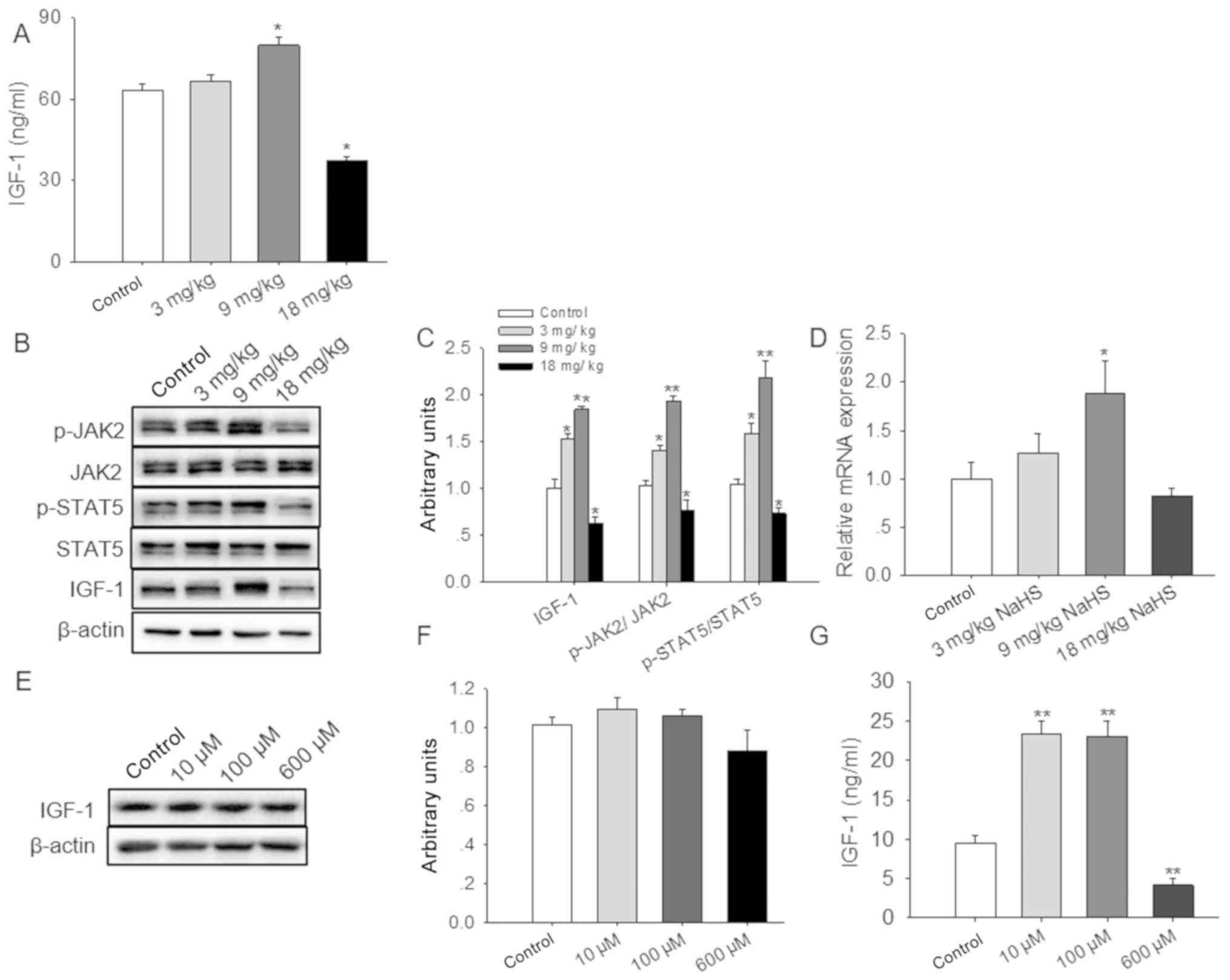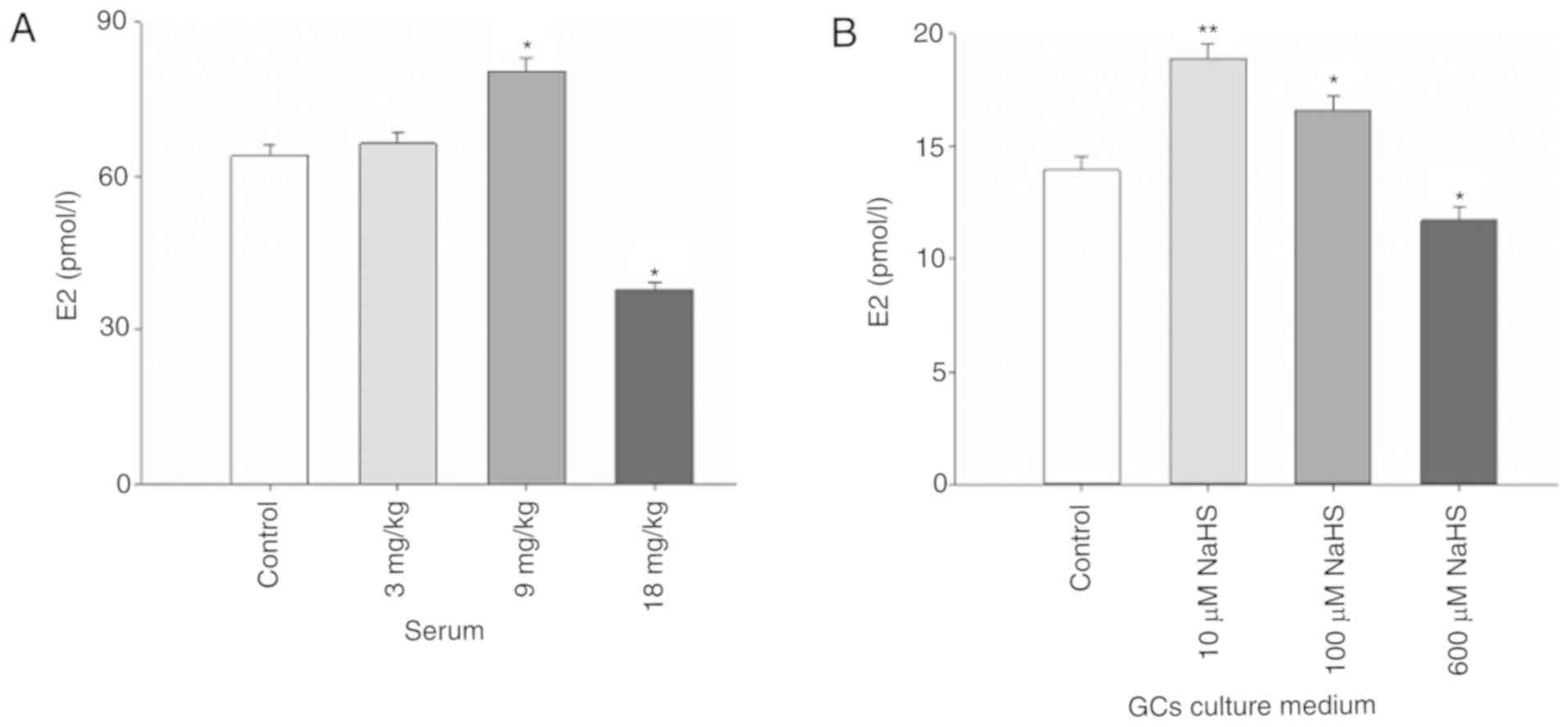|
1
|
Rezaei R, Wu Z, Hou Y, Bazer FW and Wu G:
Amino acids and mammary gland development: Nutritional implications
for milk production and neonatal growth. J Anim Sci Biotechnol.
7:202016. View Article : Google Scholar : PubMed/NCBI
|
|
2
|
Hennighausen L and Robinson GW: Signaling
pathways in mammary gland development. Dev Cell. 1:467–475. 2001.
View Article : Google Scholar : PubMed/NCBI
|
|
3
|
Mcnally S and Stein T: Overview of mammary
gland development: A comparison of mouse and human. Methods Mol
Biol. 1501:1–17. 2017. View Article : Google Scholar : PubMed/NCBI
|
|
4
|
Visvader JE and Smith GH: Murine mammary
epithelial stem cells: Discovery, function, and current status.
Cold Spring Harb Perspect Biol. 3:a0048792011. View Article : Google Scholar : PubMed/NCBI
|
|
5
|
Macias H and Hinck L: Mammary gland
development. Wiley Interdiscip Rev Dev Biol. 1:533–557. 2012.
View Article : Google Scholar : PubMed/NCBI
|
|
6
|
Brisken C and Ataca D: Endocrine hormones
and local signals during the development of the mouse mammary
gland. Wiley Interdiscip Rev Dev Biol. 4:181–195. 2015. View Article : Google Scholar : PubMed/NCBI
|
|
7
|
Hue-Beauvais C, Laubier J, Brun N, Houtia
I, Jaffrezic F, Bevilacqua C, Provost FL and Charlier M: Puberty is
a critical window for the impact of diet on mammary gland
development in the rabbit. Dev Dyn. 248:948–960. 2019. View Article : Google Scholar : PubMed/NCBI
|
|
8
|
Farmer C: Review: Mammary development in
swine: Effects of hormonal status, nutrition and management.
Canadian J Anim Sci. 93:1–7. 2013. View Article : Google Scholar
|
|
9
|
Silva AL, Detmann E, Dijkstra J, Pedroso
AM, Silva LHP, Machado AF, Sousa FC, Santos GBD and Marcondes MI:
Effects of rumen-undegradable protein on intake, performance, and
mammary gland development in prepubertal and pubertal dairy
heifers. J Dairy Sci. 101:5991–6001. 2018. View Article : Google Scholar : PubMed/NCBI
|
|
10
|
Meng Y, Zhang J, Zhang F, Ai W, Zhu X, Shu
G, Wang L, Gao P, Xi Q, Zhang Y, et al: Lauric acid stimulates
mammary gland development of pubertal mice through activation of
GPR84 and PI3K/Akt signaling pathway. J Agric Food Chem. 65:95–103.
2017. View Article : Google Scholar : PubMed/NCBI
|
|
11
|
Farmer C, Palin MF and Martel-Kennes Y:
Impact of diet deprivation and subsequent over-allowance during
prepuberty. Part 2. Effects on mammary gland development and
lactation performance of sows. J Anim Sci. 90:872–880. 2012.
View Article : Google Scholar : PubMed/NCBI
|
|
12
|
Kapila N, Sharma A, Kishore A, Sodhi M,
Tripathi PK, Mohanty AK and Mukesh M: Impact of heat stress on
cellular and transcriptional adaptation of mammary epithelial cells
in riverine buffalo (Bubalus Bubalis). PLoS One. 11:e01572372016.
View Article : Google Scholar : PubMed/NCBI
|
|
13
|
Zhang J, Ye J, Yuan C, Fu Q, Zhang F, Zhu
X, Wang L, Gao P, Shu G, Jiang Q and Wang S: Exogenous
H2S exerts biphasic effects on porcine mammary
epithelial cells proliferation through PI3K/Akt-mTOR signaling
pathway. J Cell Physiol. 233:7071–7081. 2018. View Article : Google Scholar : PubMed/NCBI
|
|
14
|
Sciascia Q, Sales F, van der Linden D,
Wards N, Oliver M, Blair H and McCoard S: Nutritional plane of
twin-bearing ewes alters fetal mammary gland biochemical
composition and mTOR/MAPK pathway signaling. J Anim Sci.
93:699–708. 2015. View Article : Google Scholar : PubMed/NCBI
|
|
15
|
Gao HN, Hu H, Zheng N and Wang JQ: Leucine
and histidine independently regulate milk protein synthesis in
bovine mammary epithelial cells via mTOR signaling pathway. J
Zhejiang Univ Sci B. 16:560–572. 2015. View Article : Google Scholar : PubMed/NCBI
|
|
16
|
Li L, Liu L, Qu B, Li X, Gao X and Zhang
M: Twinfilin 1 enhances milk bio-synthesis and proliferation of
bovine mammary epithelial cells via the mTOR signaling pathway.
Biochem Biophys Res Commun. 492:289–294. 2017. View Article : Google Scholar : PubMed/NCBI
|
|
17
|
Lim S and Kaldis P: Cdks, cyclins and
CKIs: Roles beyond cell cycle regulation. Development.
140:3079–3093. 2013. View Article : Google Scholar : PubMed/NCBI
|
|
18
|
Park SY, Jeong MS, Han CW, Yu HS and Jang
SB: Structural and functional insight into proliferating cell
nuclear antigen. J Microbiol Biotechnol. 26:637–647. 2016.
View Article : Google Scholar : PubMed/NCBI
|
|
19
|
Xiong Y, Hannon GJ, Zhang H, Casso D,
Kobayashi R and Beach D: p21 is a universal inhibitor of cyclin
kinases. Nature. 366:701–704. 1993. View Article : Google Scholar : PubMed/NCBI
|
|
20
|
Meng Y, Yuan C, Zhang J, Zhang F, Fu Q,
Zhu X, Shu G, Wang L, Gao P, Xi Q, et al: Stearic acid suppresses
mammary gland development by inhibiting PI3K/Akt signaling pathway
through GPR120 in pubertal mice. Biochem Biophys Res Commun.
491:192–197. 2017. View Article : Google Scholar : PubMed/NCBI
|
|
21
|
Meng Y, Zhang J, Yuan C, Zhang F, Fu Q, Su
H, Zhu X, Wang L, Gao P, Shu G, et al: Oleic acid stimulates HC11
mammary epithelial cells proliferation and mammary gland
development in peripubertal mice through activation of
CD36-Ca2+ and PI3K/Akt signaling pathway. Oncotarget.
9:12982–12994. 2018. View Article : Google Scholar : PubMed/NCBI
|
|
22
|
Zhang S, Bian H, Li X, Wu H, Bi Q, Yan Y
and Wang Y: Hydrogen sulfide promotes cell proliferation of oral
cancer through activation of the COX2/AKT/ERK1/2 axis. Oncol Rep.
35:2825–2832. 2016. View Article : Google Scholar : PubMed/NCBI
|
|
23
|
Liu D, Wang Z, Zhan J, Zhang Q, Wang J,
Zhang Q, Xian X, Luan Q and Hao A: Hydrogen sulfide promotes
proliferation and neuronal differentiation of neural stem cells and
protects hypoxia-induced decrease in hippocampal neurogenesis.
Pharmacol Biochem Behav. 116:55–63. 2014. View Article : Google Scholar : PubMed/NCBI
|
|
24
|
King AL, Polhemus DJ, Bhushan S, Otsuka H,
Kondo K, Nicholson CK, Bradley JM, Islam KN, Calvert JW, Tao YX, et
al: Hydrogen sulfide cytoprotective signaling is endothelial nitric
oxide synthase-nitric oxide dependent. Proc Natl Acad Sci USA.
111:3182–3187. 2014. View Article : Google Scholar : PubMed/NCBI
|
|
25
|
Olas B: Hydrogen sulfide in signaling
pathways. Clin Chim Acta. 439:212–218. 2015. View Article : Google Scholar : PubMed/NCBI
|
|
26
|
Dong XB, Yang CT, Zheng DD, Mo LQ, Wang
XY, Lan AP, Hu F, Chen PX, Feng JQ, Zhang MF and Liao XX:
Inhibition of ROS-activated ERK1/2 pathway contributes to the
protection of H2S against chemical hypoxia-induced injury in H9c2
cells. Mol Cell Biochem. 362:149–157. 2012. View Article : Google Scholar : PubMed/NCBI
|
|
27
|
Liu M, Li Y, Liang B, Li Z, Jiang Z, Chu C
and Yang J: Hydrogen sulfide attenuates myocardial fibrosis in
diabetic rats through the JAK/STAT signaling pathway. Int J Mol
Med. 41:1867–1876. 2018.PubMed/NCBI
|
|
28
|
Yang B, Bai Y, Yin C, Qian H, Xing G, Wang
S, Li F, Bian J, Aschner M and Lu R: Activation of autophagic flux
and the Nrf2/ARE signaling pathway by hydrogen sulfide protects
against acrylonitrile-induced neurotoxicity in primary rat
astrocytes. Arch Toxicol. 92:2093–2108. 2018. View Article : Google Scholar : PubMed/NCBI
|
|
29
|
Yang F, Zhang L, Gao Z, Sun X, Yu M, Dong
S, Wu J, Zhao Y, Xu C, Zhang W and Lu F: Exogenous H2S protects
against diabetic cardiomyopathy by activating autophagy via the
AMPK/mTOR pathway. Cell Physiol Biochem. 43:1168–1187. 2017.
View Article : Google Scholar : PubMed/NCBI
|
|
30
|
Liu M, Li Z, Liang B, Li L, Liu S, Tan W,
Long J, Tang F, Chu C and Yang J: Hydrogen sulfide ameliorates rat
myocardial fibrosis induced by thyroxine through PI3K/AKT signaling
pathway. Endocr J. 65:769–781. 2018. View Article : Google Scholar : PubMed/NCBI
|
|
31
|
Gao P, Zhang AL and Zhong YY: Separation,
culture and identification of sow ovarian granulose cells.
Guangdong Agric Sci. 131–135. 2014.(In Chinese).
|
|
32
|
Ball SM: The development of the terminal
end bud in the prepubertal-pubertal mouse mammary gland. Anat Rec.
250:459–464. 1998. View Article : Google Scholar : PubMed/NCBI
|
|
33
|
Zhang M, Xu J, Wang T, Wan X, Zhang F,
Wang L, Zhu X, Gao P, Shu G, Jiang Q and Wang S: The dipeptide
pro-gly promotes IGF-1 expression and secretion in HepG2 and female
mice via PepT1-JAK2/STAT5 pathway. Front Endocrinol (Lausanne).
9:4242018. View Article : Google Scholar : PubMed/NCBI
|
|
34
|
Ye J, Ai W, Zhang F, Zhu X, Shu G, Wang L,
Gao P, Xi Q, Zhang YL, Jiang Q and Wang S: Enhanced proliferation
of porcine bone marrow mesenchymal stem cells induced by
extracellular calcium is associated with the activation of the
calcium-sensing receptor and ERK signaling pathway. Stem Cells Int.
2016:657–671. 2016. View Article : Google Scholar
|
|
35
|
Luo XY, Jiang XK, Li J, Bai Y, Li Z, Wei
P, Sun S, Liang Y, Han S, Li X and Zhang BY: Insulin-like growth
factor-1 attenuates oxidative stress-induced hepatocyte premature
senescence in liver fibrogenesis via regulating nuclear
p53-progerin interaction. Cell Death Dis. 10:4512019. View Article : Google Scholar : PubMed/NCBI
|
|
36
|
Roy JR, Chakraborty S and Chakraborty TR:
Estrogen-like endocrine disrupting chemicals affecting puberty in
humans-a review. Med Sci Monit. 15:RA137–RA145. 2009.PubMed/NCBI
|
|
37
|
Hu X, Luan L, Guan W, Zhang S, Li B, Ji W
and Fan H: Hydrogen sulfide attenuates isoflurane-induced
neuroapoptosis and cognitive impairment in the developing rat
brain. BMC Anesthesiol. 17:1232017. View Article : Google Scholar : PubMed/NCBI
|
|
38
|
Mani S, Cao W, Wu L and Wang R: Hydrogen
sulfide and the liver. Nitric Oxide. 41:62–71. 2014. View Article : Google Scholar : PubMed/NCBI
|
|
39
|
Guo Q, Feng X, Xue H, Teng X, Jin S, Duan
X, Xiao L and Wu Y: Maternal renovascular hypertensive rats
treatment with hydrogen sulfide increased the methylation of AT1b
gene in offspring. Am J Hypertens. 30:1220–1227. 2017. View Article : Google Scholar : PubMed/NCBI
|
|
40
|
Pichette J, Fynn-Sackey N and Gagnon J:
Hydrogen sulfide and sulfate prebiotic stimulates the secretion of
GLP-1 and improves glycemia in male mice. Endocrinology.
158:3416–3425. 2017. View Article : Google Scholar : PubMed/NCBI
|
|
41
|
Askari H, Seifi B, Kadkhodaee M, Sanadgol
N, Elshiekh M, Ranjbaran M and Ahghari P: Protective effects of
hydrogen sulfide on chronic kidney disease by reducing oxidative
stress, inflammation and apoptosis. EXCLI J. 17:14–23.
2018.PubMed/NCBI
|
|
42
|
Wang SC: PCNA: A silent housekeeper or a
potential therapeutic target? Trends Pharmacol Sci. 35:178–186.
2014. View Article : Google Scholar : PubMed/NCBI
|
|
43
|
Zhou R, Chen H, Chen J, Chen X, Wen Y and
Xu L: Extract from astragalus membranaceus inhibit breast cancer
cells proliferation via PI3K/AKT/mTOR signaling pathway. BMC
Complement Altern Med. 18:832018. View Article : Google Scholar : PubMed/NCBI
|
|
44
|
Zhou H, Jiao G, Dong M, Chi H, Wang H, Wu
W, Liu H, Ren S, Kong M, Li C, et al: Orthosilicic acid accelerates
bone formation in human osteoblast-like cells through the
PI3K-Akt-mTOR pathway. Biol Trace Elem Res. 190:327–335. 2019.
View Article : Google Scholar : PubMed/NCBI
|
|
45
|
Yu JS and Cui W: Proliferation, survival
and metabolism: The role of PI3K/AKT/mTOR signalling in
pluripotency and cell fate determination. Development.
143:3050–3060. 2016. View Article : Google Scholar : PubMed/NCBI
|
|
46
|
Rosen JM: On hormone action in the mammary
gland. Cold Spring Harb Perspect Biol. 4:a0130862012. View Article : Google Scholar : PubMed/NCBI
|
|
47
|
Mallepell S, Krust A, Chambon P and
Brisken C: Paracrine signaling through the epithelial estrogen
receptor α is required for proliferation and morphogenesis in the
mammary gland. Proc Natl Acad Sci USA. 103:2196–2201. 2006.
View Article : Google Scholar : PubMed/NCBI
|
|
48
|
Zhou Y, Li S, Li J, Wang D and Li Q:
Effect of microRNA-135a on cell proliferation, migration, invasion,
apoptosis and tumor angiogenesis through the IGF-1/PI3K/Akt
signaling pathway in non-small cell lung cancer. Cell Physiol
Biochem. 42:1431–1446. 2017. View Article : Google Scholar : PubMed/NCBI
|















